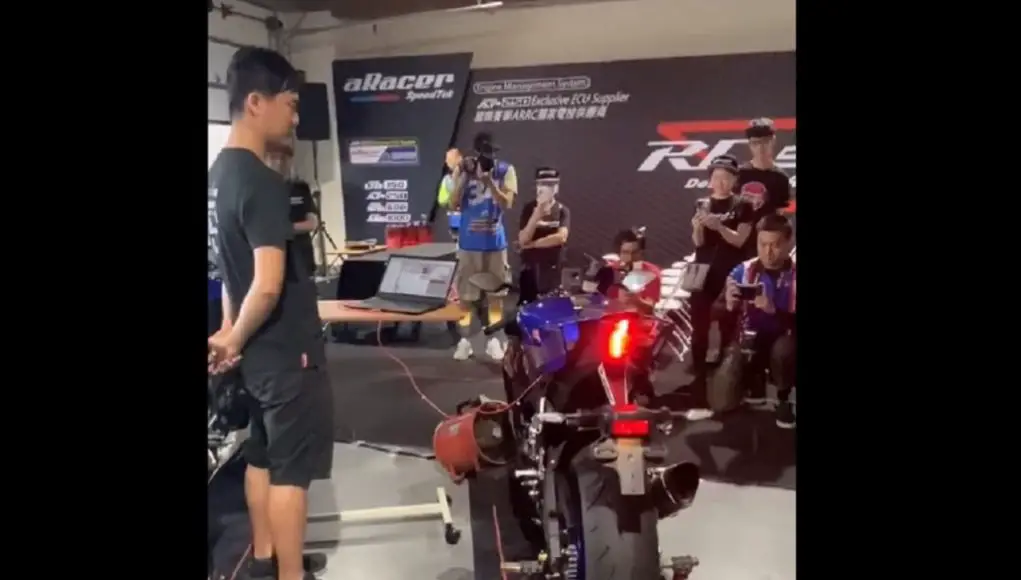These ECU engineers took their exhaust idling technology one step further and programmed an entire song, using the motorcycle’s exhaust as an instrument.
In a brilliant piece of engineering that combines art and machine, race bike ECU manufacturer aRacer Speedtek programmed one of their ECU’s in such a way that, when they pressed “run” on their program, they could get a motorcycle to run through a specific set of RPMs, playing notes, for as long or short as they needed. Although a party piece for a trade show designed more to get foot traffic to their booth, they were able to demonstrate just how versatile and robust their ECU tuner is.
Check out the video of their motorcycle playing Happy Birthday below including a video of their proprietary technology wrapped up in a more consumer friendly application, tuning your idle sound.
The programming behind “playing RPMs” isn’t entirely brand new. You’ve probably played around with a rudimentary version of this technology manually in your own car, lowering and raising the revs of your engine while in park or neutral. You notice that the pitch of your engine and exhaust note changes with an increase or decrease if RPMs. This is not surprising considering that engines are just glorified air pumps.
This Bosozoku car played jinglebells all with his throttle, no computers.
Other ECU manufacturers in higher race series have exploited this ECU loop hole, too. Renault infamously played, “God Save the Queen” on one of their F1 cars.
Here’s a relevant quote from a Reddit thread on the matter. What the second quote means exactly is beyond me, but, if you can understand it, all the better.
“When you press the gas, a sensor tells the engines computer how far it’s being pushed down with a certain amount of voltage (more throttle = more voltage and vice versa.) Renault F1 wrote a program to mimic the throttle position sensors job.”
and
“The throttle on a car is a torque controller rather than a speed controller. They are most likely running a PID feedback loop from a tachometer to modulate the engine’s speed.”
I assume the basic principles of a throttle position sensor, voltage, and the use of a PID Feedback loop to correct for externalities is also applied to this bike programmed to play, “Happy Birthday.”
Beyond sound, I can only presume practical purposes for this technology, on race day, include warming up a bike (or car) through a specific series of rpms and durations to accurately bring the bike up to operating temps safely and effectively.
Alternatively, you can probably also program in a set of cooldown RPMs, too.
And Happy Birthday is cool and all, but how complicated can you get? Can you combine bikes to make a bike orchestra? That’d probably get expensive, quick.
If anyone does it, be sure to set up your test lab in a space with plenty of ventilation.




